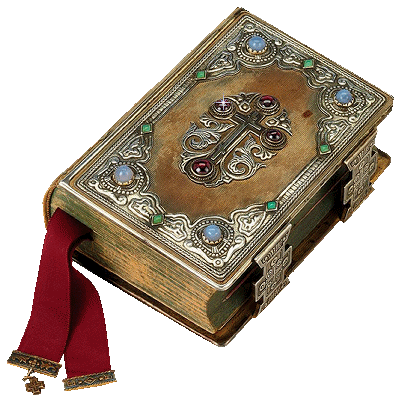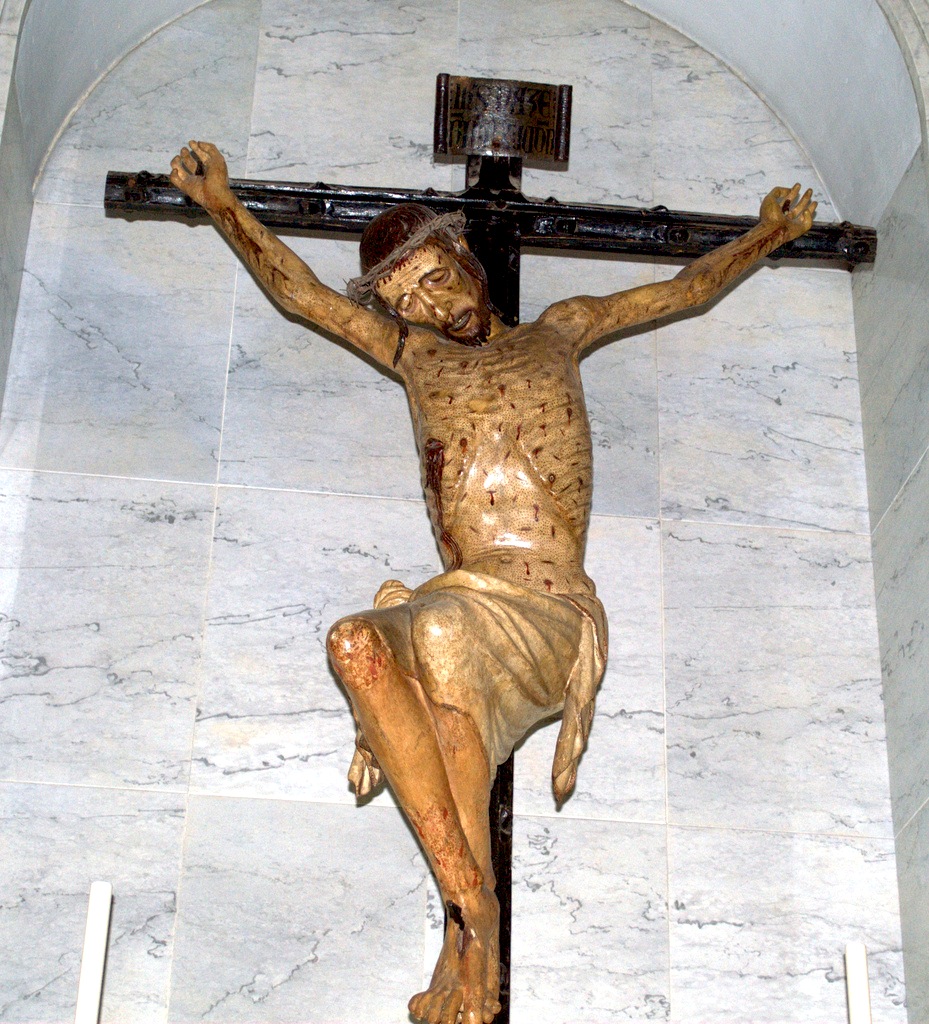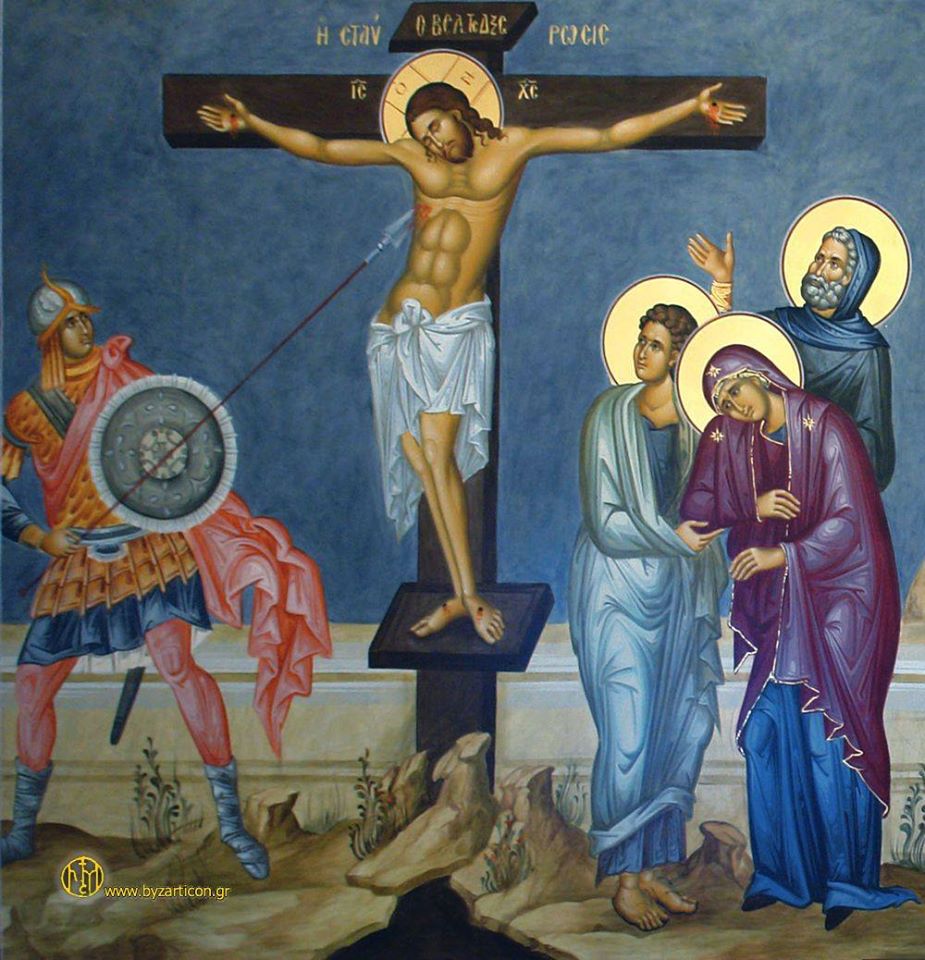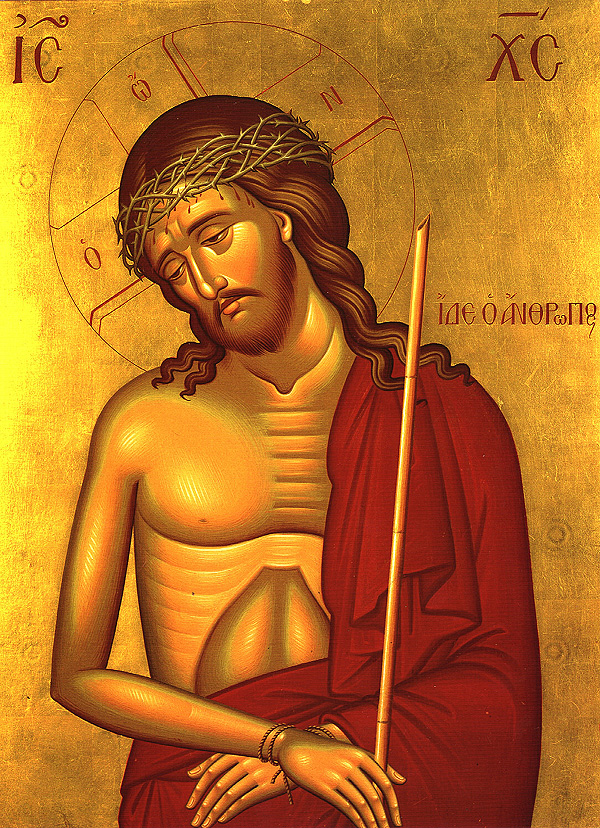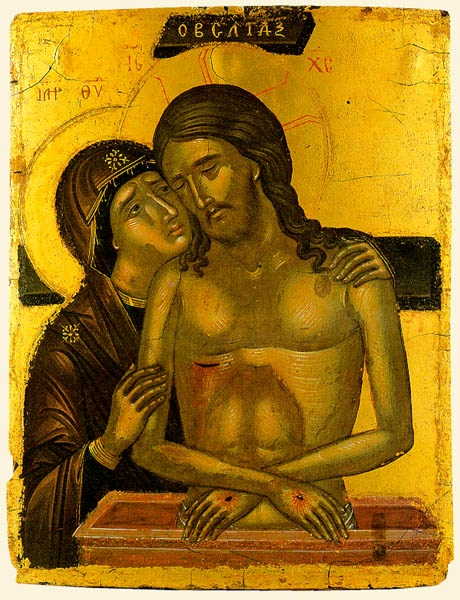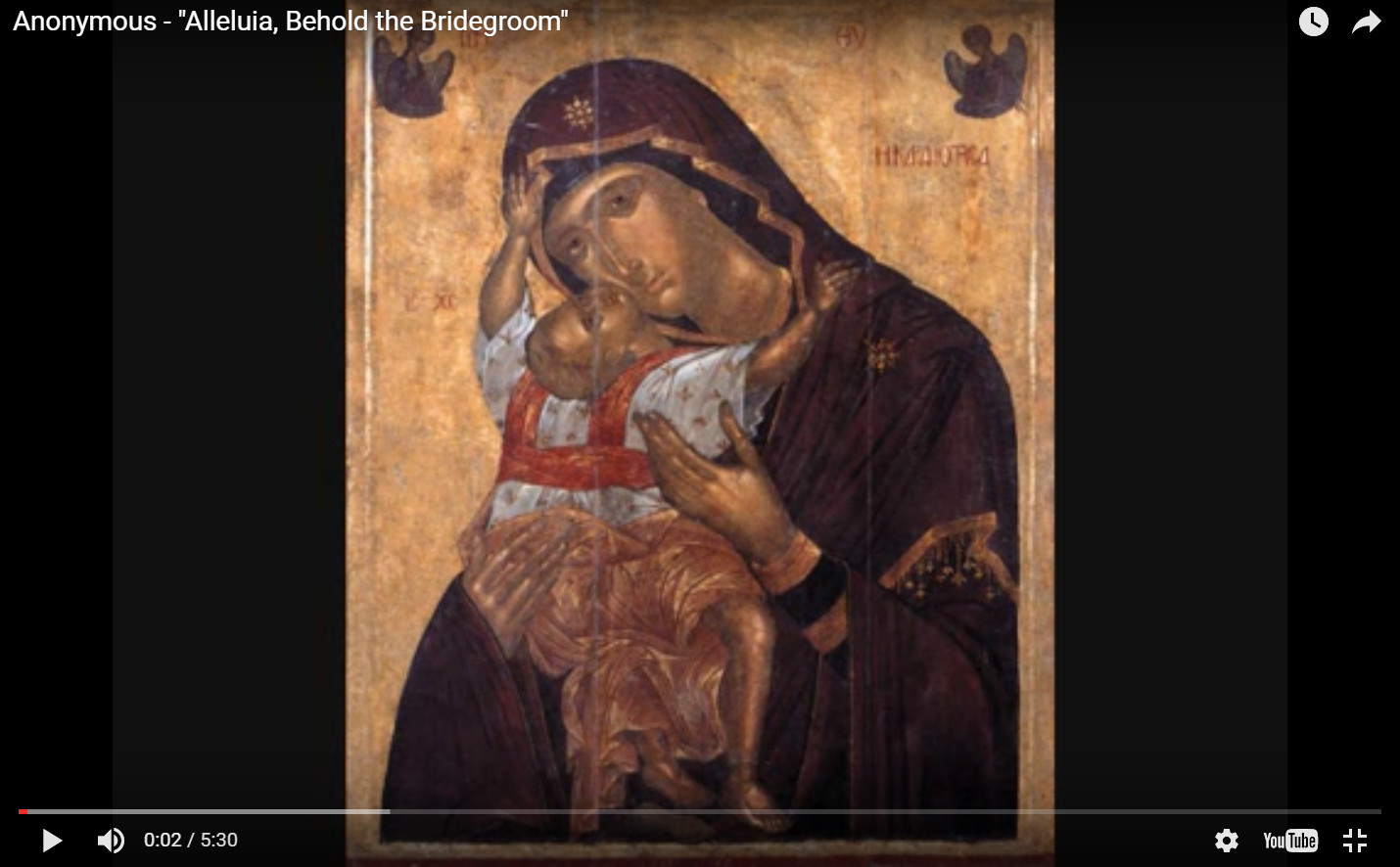|
|
Orthodox Outlet for Dogmatic Enquiries | Essays on Orthodoxy |
|
An Atonement of Shame
– Orthodoxy and the Cross by Fr. Stephen Freeman Source: https://blogs.ancientfaith.com |
|
Some decades ago in my early (Anglican) priesthood, a
parishioner brought a crucifix back from South America. The question for
me as a priest was whether I would accept the crucifix as a gift and
place it in the Church. I like crucifixes, my taste was always towards
the Catholic direction. But, you have to bear in mind that Spanish/Latin
crucifixes have a tendency to be, well, rather gory. My congregation was
pretty straight-up WASP. But, I was young, a still largely unbruised
banana, so I installed the crucifix over the rear door of the Church.
Everyone could see it as they exited. The first Sunday was the test. I got my clock cleaned pretty
quickly. An irate woman said, “I want that thing removed! I do not want
my children seeing it. I believe in a risen Lord!” We had a short
theological discussion the outcome of which was that I left the crucifix
where it was. I do not think she adjusted. I also do not think her
children were scarred for life.
But I understood her sensibilities. The brutality of the crucifixion is
easily overwhelming. It is particularly overwhelming if the brutality is
depicted in Spanish splendor. My defense of the brutal crucifix,
however, did not prepare me for my later encounter with Orthodox
presentations of Christ on the Cross.
Like all Orthodox icons, the Crucifixion is somewhat stylized, conforming to the norms of Byzantine grammar. It is a theological rather than historical presentation. Typically, the icon presents a very calm Christ on the Cross. He is clearly “dead” (His eyes are closed). But there is no particular sense of agony. The suffering is more a note of sadness rather than pain. And, contrary to history, the plaque over the Cross reads: “The King of Glory.” As glory goes, it is indeed subdued. There is a profound stillness that comes with it.
The icon of the Crucifixion could also be placed with two
other icons that are common to Orthodox Holy Week: the icon of “The
Bridegroom,” and the icon of “Extreme Humility.” The portrayal of Christ
in both icons is similar. He is seen with head bowed, arms folded in a
dropped position in front of Him. It is a picture of submission and
acceptance. The Extreme Humility makes a certain obvious sense: it is
Christ in death. The wounds are obvious; He is seen in the tomb; the
Cross is placed behind Him; the spear and the sponge are there as well.
Indeed, the placement of the hands are reminiscent of the hands on the
Shroud of Turin.
If Christ in death is extreme humility, then Christ as
Bridegroom is extreme irony. For the term “bridegroom” is a title for
Christ associated with His coming in glory (Matt. 25:1ff.) The Orthodox
focus on the Bridegroom, however, is a Holy Week devotion, a call to
repentance. On the first three days of Holy Week we sing with great
solemnity:
Behold, the Bridegroom comes in the middle of the night! (Click on image to follow video link) This is the Great Irony: the Great becomes small; the Rich
becomes poor; the Mighty becomes weak; the Author of Life enters death;
the God of All becomes the servant of all. This same irony lies at the
heart of the Christian way of life. It strikes down every pretense to
power and exalts the emptiness of humility as the fullness of being. Of great note, however, is the absence of pain and torture in
this presentation. The theme of the Orthodox account of Christ’s
suffering and death is that of bearing shame and mockery. You can search
the texts of Holy Week for the word “pain,” and come up with almost
nothing. The mocking and the shame, however, color everything. The same is largely true of the New Testament as well. When
St. Paul describes Christ’s self-emptying (kenosis) on the Cross, he
says that Christ “became obedient to death,” and adds, “even death on a
Cross.” The point of the “even” is not that the Cross is painful above
all pain, but that the Cross is shameful above all shame. There are no
gospel accounts of characters taking some sort of masochistic pleasure
and delighting in Christ’s pain. However, there are repeated
descriptions of His humiliation. The purple robe, the crown of thorns
are not unique images of pain, but torturous bits of mockery. All of this runs counter to the penal theories of the
atonement. In those theories, Christ is punished on our behalf. It is
His pain and suffering as sacrificial victim that come to the fore. What
Western (cf. Spanish) art did to the Crucifixion, Western rhetoric did
to the atonement. The Reformation did nothing to change this other than
to avoid its artistic presentation in Churches (it looked too
“Catholic”). But what role does shame play within an understanding of the
atonement? It is, I think, essential, though hard for us to understand.
America has been described as a shame-based culture where shame itself
is not acknowledged (it’s too painful). It helps if we understand the
nature of shame itself. Shame is the natural response to broken communion. [footnote]
The relationship of communion with others is the very essence of safety
and comfort. Its most primal expression is the bond between mother and
nursing infant. Face-to-face, the child is held and nurtured. There the
child is comforted and protected. [footnote] Every later experience of
union draws on this primal experience. It is not accidental that the
ultimate relationship, that of union with God in Christ, is described
precisely in the language of face-to-face. The first instinct of shame is to look down, to turn the face
away and hide. Blood rushes to the face (it “burns with shame”). Shame
is the very sacrament of broken communion, the most proper and natural
expression of sin. When Christ enters our shame (and bears it), it is as
though God Himself stands before us, takes our face in His hands, and
turns our eyes back to Him. This is the action we see in the parable of
the Prodigal Son. The Father’s actions demonstrate his running to meet
his son in his shame. Had the father remained in the house, the son
would have born his shame alone. The father not only shares the shame,
but in sharing it, restores communion, illustrated by the robe and the
ring. Even the shame of the elder son is met with the same meekness and
shame-bearing. The shame that we experience in the natural settings of our
lives is an image of something truly and ontologically real: sin
shatters our union with God. Christ’s incarnation is an entrance into
this realm of ontological shame and brokenness through union with our
human nature. That reality is made manifestly clear in the events of His
passion and the description that has come down to us. Pain and suffering are tragic parts of our lives. They are the
burden of our mortality. But far deeper and more profound is the shame
that represents our ruptured union with God. Pain and suffering are only
symptoms. The Orthodox portrayal of Christ in the events of Holy Week
clearly reflect the themes found in Scripture. It is only in
understanding Christ’s bearing of shame and mockery that we will fully
understand what has been done for us in His death and resurrection. Our
culture, as noted above, has an aversion to shame (it’s one of our
greatest secrets). We have somehow come to prefer stories of violence.
Our cultural treatment of the Cross majors in violence. But nothing
sinful can be understood apart from the role played by shame. In the Ladder of Divine Ascent we hear: “Shame can only be
healed by shame.” As difficult as this is for us, it is the place of
atonement and exchange that Christ has set. I have been learning
recently, however, that to speak of “bearing a little shame” (in the
words of the Elder Sophrony) is overwhelming to some. Popular shame
researcher and author, Brene Brown, uses the term “vulnerability” when
she speaks of confronting and healing shame. Vulnerability, at its core,
is nothing other than “bearing a little shame.” It is the willingness to
be real, to be authentic with the risk that it entails. This is on the
psychological level. There is a deeper level, though we cannot really go
there without enduring the psychological first.
God give us grace to be vulnerable in His presence, vulnerable enough to
discover our true selves. *********************** About Fr. Stephen FreemanFr. Stephen is a priest of the Orthodox Church in America, serving as Rector of St. Anne Orthodox Church in Oak Ridge, Tennessee. He is also author of Everywhere Present and the Glory to God podcast series. |
